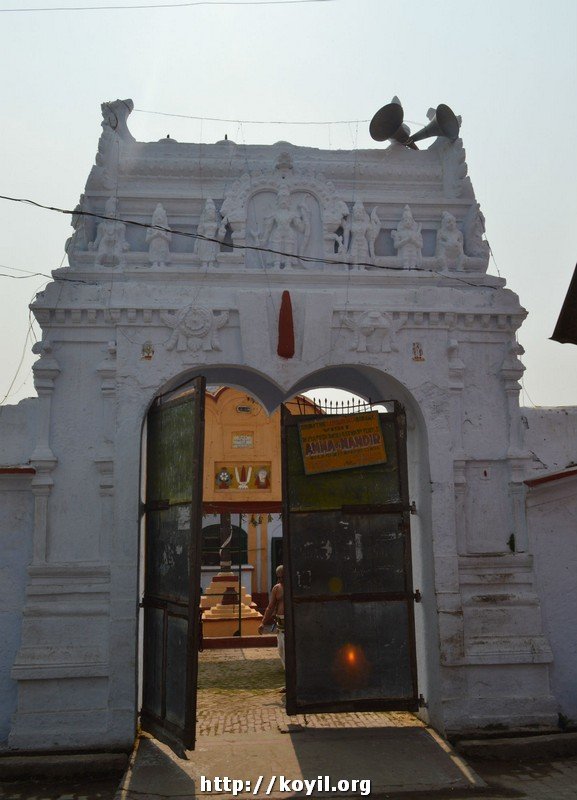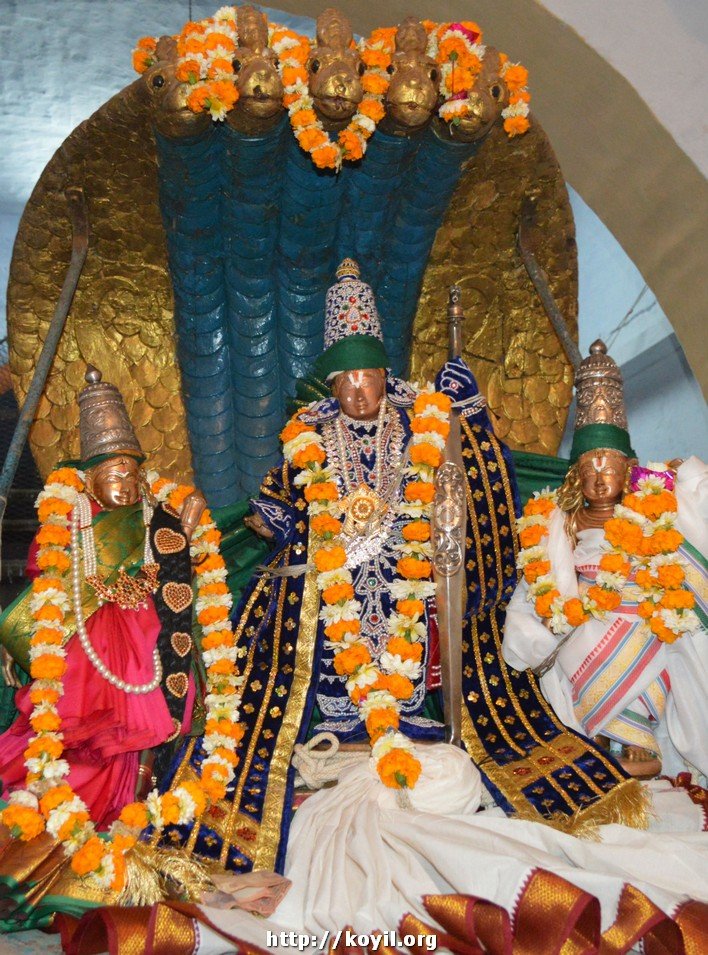SrI: SrImathE SatakOpAya nama: SrImathE rAmAnujAya nama: SrImath varavaramunayE nama: SrI vAnAchala mahAmunayE nama:
perumAL: srI rAman – chakkaravarthi thirumagan
thAyAr: sIthA pirAtti
Region: vada nAdu
perumAL posture: ninRa (Standing), amarntha (Sitting) thirukkOlams (postures)
vimAnam: pushkala
pushkariNi: sarayu nadhi (river)
AzhwArs mangaLAsAsansams: nammAzhwAr, kulasEkarAzhwAr, periyAzhwAr, thoNdaradippodi AzhwAr, thirumangai AzhwAr
prabhandhams: periyAzhwAr thirumozhi, perumAL thirumozhi, thiruppaLLiyezhuchchi, periya thirumozhi, thiruvAimozhi
Total pAsurams: 13
Agamam: pAncharAthram (at ammAji mandhir)
Timings:
Contacts:
Uthsavams
- 2015
- March – srI rAma navami uthsavam – https://plus.google.com/photos/107723698299182214927/albums/6132936511463320065
- 2018 – March – srI rAma navami uthsavam – https://www.facebook.com/341538552715232/photos/?tab=album&album_id=776925355843214
- 2019
- Sep 20 to 22 – pavithrOthsavam invitation – https://www.facebook.com/koyil.org/photos/a.379385505597203/1099491660253247/?type=3&av=341538552715232&eav=Afbp8DOjxwwnp-rCP1Y-93r2eNhEZ5Ijh3RJcAuhqst1tQPLro6lQgg824VxR3PcBqY
Specialities:
Birth place of srI rAma. A beautiful temple following thennAchArya srIvaishNava sampradhAyam is present in this dhivya dhEsam. This temple is famously known as ammAji mandhir which was established by yOgi pArthasArathy iyengAr swamy.
Here is a short write up on ammAji mandhir’s history by M A madhusUdhanan swamy:
Once in Yogi Parthasarathy Iyengar Swamy’s (born 1840) dream, Chakravarthy Thirumagan appeared and asked him to look in a place in thiruppullANi and find a Ramar Vigraham there and do a prathistai in Ayodhya. Swami did the same and purchased huge land in Ayodhya and built a south indian style temple with Vimanams, Dwajasthamabam, Alwar Acharya dhivya mangaLa vigrahams according to Pancharathra Agamam and thennAcharya sampradhAyam and to meet the expenses, he established the Komutti bunglow colony (in thiruvallikkENi) and used the rent from the land.
After the installation in early 1900s, He attained acharyan thiruvadi in a few years and after his time, his dharma pathni Smt Yogi SingammAl (who was also a Bhagavat vishaya Adhikari and the gyAna AcharyA of stalwarts like Ayodhi Ramanuja Jeeyar and Kunrapakkam Jeeyar swami) took care of the daily proceedings of the temple by staying there for almost 40 years. After her period, the temple is being maintained by Saraswati Bhandaram Committee which was also established by Yogi Swami in the aim of publishing samparadya granthams and to run a Patasalai(Sri Nampillai Sannidhi @ thiruvallikkENi). Since the temple was maintained by Yogi Singamma for a long time, locals used to refer this temple as Ammaji Mandir or DivyaDesh Mandir (as the temple’s architecture looks like any other dhivya dhEsams of south india).
Sri Ramanavami utsavam is being celebrated for 5 days ending with Mesha Sukla Navami (chAndramana). The utsavam is celebrated in similar style to that of south indian dhivya dhEsams. It is started with Mruthsangrahanam & Dwaja arohanam and on each day Thirumanajanam is done. Grand purappadu is also done daily in different vahanams like Hanumantha vahanam, Garuda sevai, Yanai Vahanam, etc., on various streets of Ayodhya. On Sri Rama Navami day, the utsavam starts with Theerthavari of Sita Lakshmana sametha Sri Ramar(theertha beram), Sri Satari & Sudharsan Aazhwan at Sarayu river followed by Thirumanjanam to Ramar, Sita, Lakshmanar and Hanuman. In the evening grand purappadu is done in Sesha vahanam and after perumal returns back to temple Dwaja Avarohanam is done.
The temple is located on the banks of Sarayu river in GolaGhat, Near Nirmochan Chaurara junction (next street to Ayodhya Post office). It is around 150 KMs from Lucknow (better to take a private cab to reach there as public transport is not good in the region). For more details the committee office at thiruvallikkENi Nampillai Sannidhi can be contacted directly.
Near by City: Lucknow
How to reach: Cab/Taxi from Lucknow is the easiest mode of transport.
Near by yAthrais: kanak bhavan, vAlmIki bhavan, etc.
Summary (From http://acharya.org/dd/a/thiru-ayOdhdhi.html)
Thanks to M A madhusUdhanan swamy for inputs and pictures
adiyen sarathy ramanuja dasan
archived in http://koyil.org
pramEyam (goal) – http://koyil.org
pramANam (scriptures) – http://srivaishnavagranthams.wordpress.com
pramAthA (preceptors) – http://guruparamparai.wordpress.com
srIvaishNava education/kids portal – http://pillai.koyil.org



can u add srirangam in u r dhivyadesams?
sure, will add when time permits.